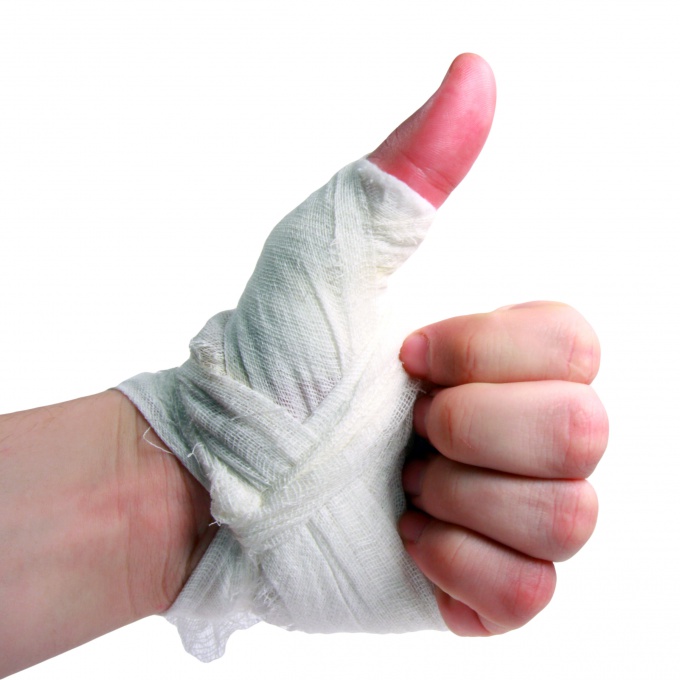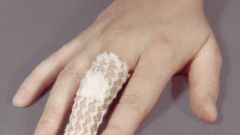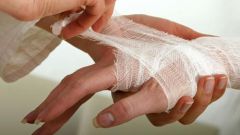Instruction
1
You must then impose a pressure bandage. To bandage the finger, you must first wrap the wound with sterile gauze, folded into a square small cloth pure cotton fabric or just cotton pads. This will help to lock the edges of the wound together, the finger will be less blood during the movement, and bandage change will be much easier and less painful.
2
Now imposed a bandage or cotton pad you need to fix. You can use a simple band-aid, but if not at hand, you can simply bandage the finger entirely. To do this, take the end of the bandage, fold it in half lengthwise and attach to the tip of your finger so that it reaches the lower end of the phalanx on the outer side of the palm, bend over the tip and passed on the inside.
3
Then straighten the bandage, pre-turning it, so folded in half the end has not dealt with the rest.
4
Now wrap the bandage around the finger in a direction from the bottom of the phalanx to the tip and then back. Ensure that the bandage is not too tight, otherwise it will be hampered flow of blood in the finger. Too weak bandage also should not be done, otherwise it will simply fly off.
5
Cut the remaining end of the bandage in half lengthwise and tie a knot around your finger to secure your bandage.






